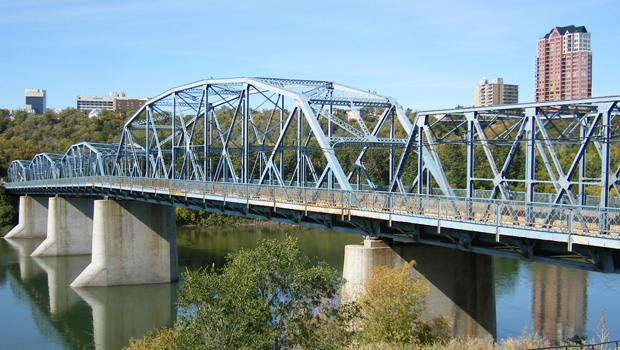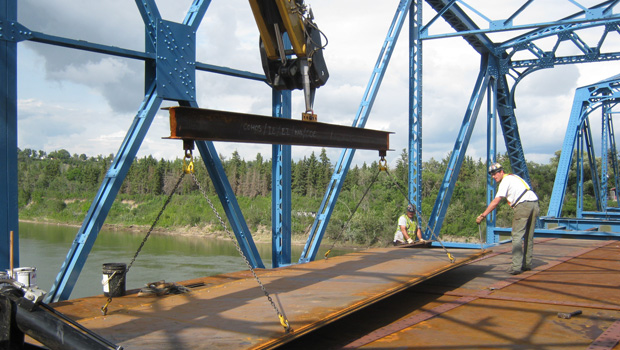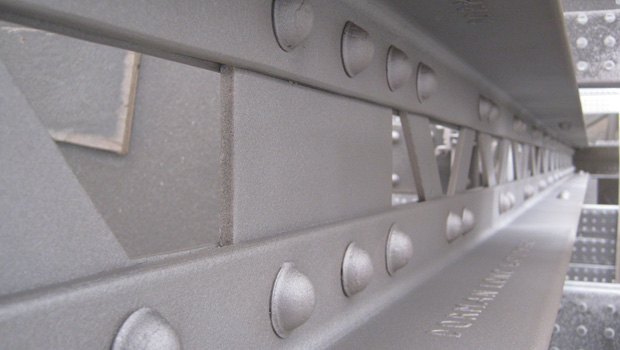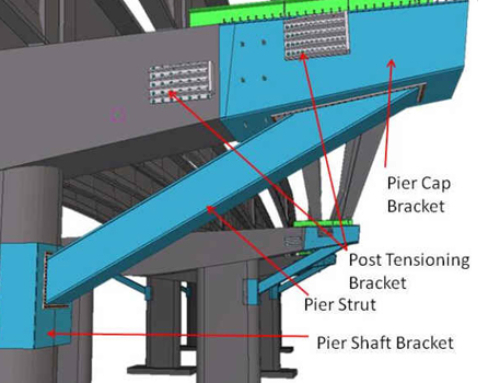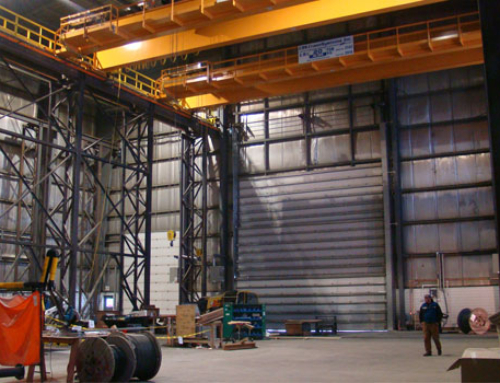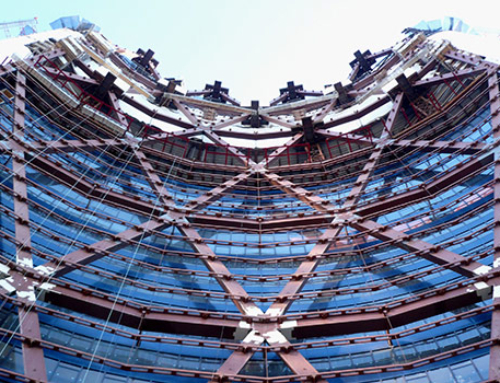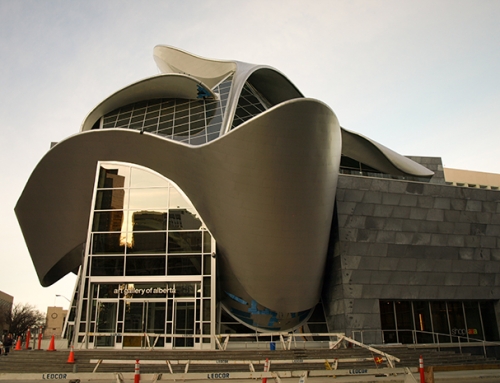Project Description
While Edmonton’s Dawson Bridge has been in service for nearly 100 years, innovative technology used in its recent rehabilitation has turned it into a modern world leader.
The five-span riveted steel through-truss bridge was originally built to carry electric trains to a coal mine on the east bank of the North Saskatchewan River. Later converted to carry automobiles, the bridge currently accommodates 17,000 vehicles per day along with significant pedestrian and cyclist traffic.
After almost a century of use, the bridge needed significant repair including total deck replacement and truss repainting. Numerous truss members required strengthening or replacement to provide an appropriate level of safety and extend the service life of the bridge.
The Dawson Bridge is listed on the Inventory of Historical Resources in the City of Edmonton. This designation means that any modifications to the bridge must be carried out in manner that respects historical aspects of its appearance.
“We did our homework,” says Kris Lima, a structural engineer with DIALOG, design consultant on the project. “Our analysis showed that numerous truss members needed to be strengthened or replaced to increase the safety of the structure. It also showed that the strengthening work could be reduced significantly by limiting the dead load on the bridge.”
The design team chose a lightweight composite steel plate and elastomer deck system using a technology originally developed for the marine industry and only recently applied to bridge construction. The system basically consists of two thin steel face plates connected by an injected elastomer core, for a total thickness of only 45 mm in the case of the Dawson Bridge.
“This deck system is light compared to a conventional deck system,” Lima says. “By using this system, we were able to reduce by more than half the number of members needing strengthening or replacement to bring the bridge up to current safety standards.
“Only a handful of bridges have been built using this technology. The Dawson Bridge project is the first major project in the world of this scale to incorporate this innovative system.”
The Dawson Bridge scored another technological first with its connection details. “All the other bridges using this deck technology involved significant field welding, which is costly and difficult to maintain quality,” Lima says. “As part of our intensive risk control program we set out to develop new connection details between adjacent deck panels which would eliminate the need of all welding on site.”
The result is an innovative bolting system that involves using splice plates to connect adjacent deck panels with countersunk bolts, allowing the panels to be quickly bolted into position on the bridge. “We conducted laboratory testing on the bolting to estimate the long-term fatigue performance of the connections,” Lima says. “Those tests demonstrated that the new connection detail can withstand fatigue loads nearly double in magnitude to those expected in actual in-service conditions.” The Dawson Bridge is the first project in the world to use this unique bolting system.
The use of the innovative deck system on the Dawson Bridge project has successfully advanced the state of the art in bridge technology and has achieved cost savings for the City of Edmonton, while allowing the rehabilitation work to be completed within a single construction season.
Project Team
Owner: City of Edmonton
Structural Engineer: DIALOG
Project Manager / General Contractor: ConCreate USL Ltd.
Fabricator: Empire Iron Works Ltd. and Steel Design and Fabricators Ltd.
Erector: Steel Design and Fabricators Ltd.

